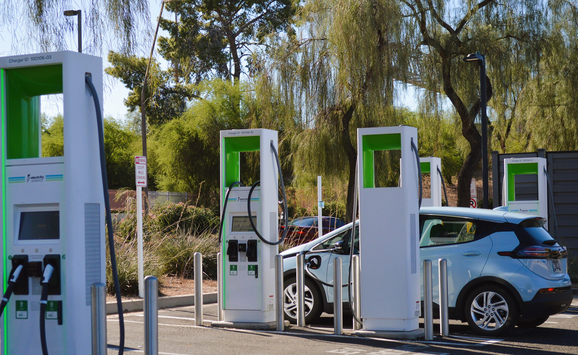Corporate Average Fuel Economy (CAFE) standards are the primary U.S. policy aimed at reducing greenhouse gas emissions (GHGs) from new cars, requiring manufacturers to achieve specific fuel economy and GHG emissions rates for their fleets. Proponents of CAFE and other energy efficiency policies argue that they correct market failures associated with the adoption of energy-saving technologies.
As evidence of a market failure, advocates often point to a 2009 report by the Electric Power Research Institute and McKinsey that estimated negative costs (energy savings greater than adoption costs) for a wide range of efficiency investments. The report also suggests that huge GHG emissions reductions are possible through energy efficiency policies and at very low or even negative cost. But recent research at RFF suggests those reductions may be overstated for passenger vehicles.
GHG reductions from energy efficiency technologies depend on how much and how efficiently new technologies are used—if efficiency gains just lead to greater use (like driving a fuel-sipping car longer distances) there is a “rebound effect.” Macroeconomic effects or other factors can contribute to the rebound effect also, though we don’t consider them here.
The size of the rebound effect matters because the regulatory agencies need to justify higher CAFE standards on a cost-benefit basis. The benefits depend on the magnitude of the fuel and emissions reductions. While the EPA assumes a rebound effect of 10 percent, research at RFF suggests that a more appropriate value for the rebound effect lies between 20 and 40 percent. The higher estimates originate from relaxing three assumptions on which previous estimates, to a varying degree, have relied.
To illustrate the implications of this research, let’s assume you purchase a Ford Focus in 2016. Of course we can’t know for sure today how a 2016 model car will perform, we at least know what CAFE standards will require. If those standards stayed at their old levels, we calculate that you would spend about $1300 annually on fuel under some basic assumptions like a gas price of $3.65/gallon and about 10,000 miles of driving per year. But with the new, stricter CAFE standards you would spend more than $500 less annually on fuel and emit around 40 percent less carbon—that is, assuming no extra driving due to the rebound effect. Results are similar for other cars like the Chrysler 300, Honda CRV and Toyota Tundra.
A 10 percent rebound effect, which the EPA uses in its analysis, would increase the Focus’s emissions nearly 7 percent. However, more realistic assumptions for the rebound effect—20 and 40 percent—results in a substantial bounce back. For the Focus, you would lose 13-27 percent of the gains from stricter CAFE limits..
What does it mean for policy that the rebound effect may erode some of the fuel and emissions reductions expected under CAFE standards? In a recent Nature article, several economists argue that the rebound effect is overplayed and that it shouldn’t be used as an excuse for policy inaction. We agree with that conclusion, but a large rebound effect does imply that a particular policy is much less effective at reducing emissions than would seem otherwise. According to the NHTSA analysis, the CAFE standards for model year 2012-16 vehicles reduce CO2 emissions by 654 million metric tons. With a more realistic rebound effect, that emissions reduction may be 458 million metric tons. That’s not enough to overturn NHTSA’s conclusion that the benefits of the 2012-2016 standards exceed the costs—the regulation passed this test by a wide margin—but such a large difference could affect the conclusions for future, more stringent standards.





